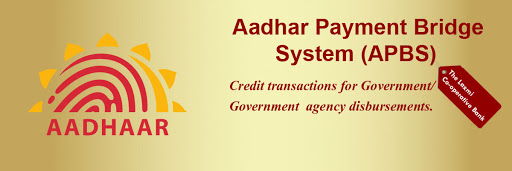What is the full form of APBS
APBS: Aadhaar Payments Bridge System
APBS Stands for Aadhaar Payments Bridge System. It is a special payment system run by the National Payments Corporation of India (NPCI) that electronically transfers government benefits and subsidies into the Aadhaar Enabled Bank Accounts (AEBA) of the intended recipients using the Aadhaar number as a central key. The payment mechanism is based on Aadhaar numbers provided by UIDAI and IINs (Institution Identification Numbers) provided by NPCI. To transfer benefits and subsidies under the Direct Benefit Transfer (DBT) program put out by the Indian government, government departments and agencies employ the Aadhar Payments Bridge System. The Aadhar Payments Bridge System assists in achieving the objective of financial inclusion and gives the government a chance to try financial re-engineering its subsidy management program. Many retail payment transactions, which were previously mostly made with cash or checks, have been converted to electronic transactions as a result of the adoption of the Aadhar Payments Bridge System.

Benefits Of Aadhaar Payments Bridge System (APBS)
- It eliminates excessive delays, several channels, and the associated paperwork in the current system.
- Enables the seamless, prompt, and direct transfer of benefits and subsidies to the Aadhaar-enabled bank account.
- Customers are not compelled to inform a government department or agency of a change in their bank account information or the details of that change.
- Customers only need to open one account and fund it in order to get benefits and subsidies under numerous social welfare programs, as opposed to having to open multiple bank accounts. Aadhaar number in the bank account to begin collecting perks and subsidies straight into his or her bank account that is Aadhaar enabled.
Features Of Aadhaar Payments Bridge System (APBS)
- Banks can use secured online access to upload and download transaction files.
- Banks have two ways to connect to NPCI: NPCINet or the Internet.
- Using the NPCI IIN as the basis for transaction routing.
- Processing of transactions by destination banks using Aadhaar numbers
- The ISO 20022 communications standards are supported by Aadhar Payments Bridge System.
- Multiple intraday sessions are supported by Aadhar Payments Bridge System.
- Direct Corporate Access (DCA) is a service offered by Aadhar Payments Bridge System to government departments and agencies.
- It offers a Dispute Management System online (DMS).
- Aadhar Payments Bridge System has a daily transaction capacity of 10 million.
- Transactions involving onus and offus can be handled using Aadhar Payments Bridge System.
- All participants have access to expanded MIS thanks to Aadhar Payments Bridge System.
- Secure Clearing and Settlement are provided by Aadhar Payments Bridge System.
Steps In Aadhaar Payments Bridge System Process (APBS)
To post payments via Aadhar Payments Bridge, you must first:
- An organization that provides services must give an Aadhar Payments Bridge File with information on the Aadhaar number, welfare scheme reference number, and the amount to be paid to its bank before it can make payments to its beneficiaries, such as MGNREGA wages, scholarships, old age pensions, etc (called sponsor bank).
- In order to submit the Aadhar Payments Bridge file to the NPCI system, the sponsor bank must also add the bank IIN (the Institute Identification Number supplied by NPCI to participant banks).
- The NPCI processes the uploaded files, creates the beneficiary bank files, and produces the settlement file.
- To bank accounts with RBI, the settlement file is posted.
- Upon completion of the settlement file processing, destination banks may download the incoming files for credit processing.
Ways To Enroll Banks In The Aadhar Payments Bridge System (APBS)
For the Aadhar Payments Bridge System, banks must submit to NPCI all necessary onboarding paperwork.
- E-tokens, Class II Digital Certificates, and Signing Tools will be purchased by banks.
- Technical integration between the bank and NPCI is required (NPCINet or Internet).
- Integration of the Aadhar Payments Bridge System application with the CBS by banks.
- For accreditation in onboarding, banks must conduct end-to-end testing and UAT.
- For onus transactions to be started on the Aadhar Payments Bridge production system, banks must have UAT certification.
|

 For Videos Join Our Youtube Channel: Join Now
For Videos Join Our Youtube Channel: Join Now










